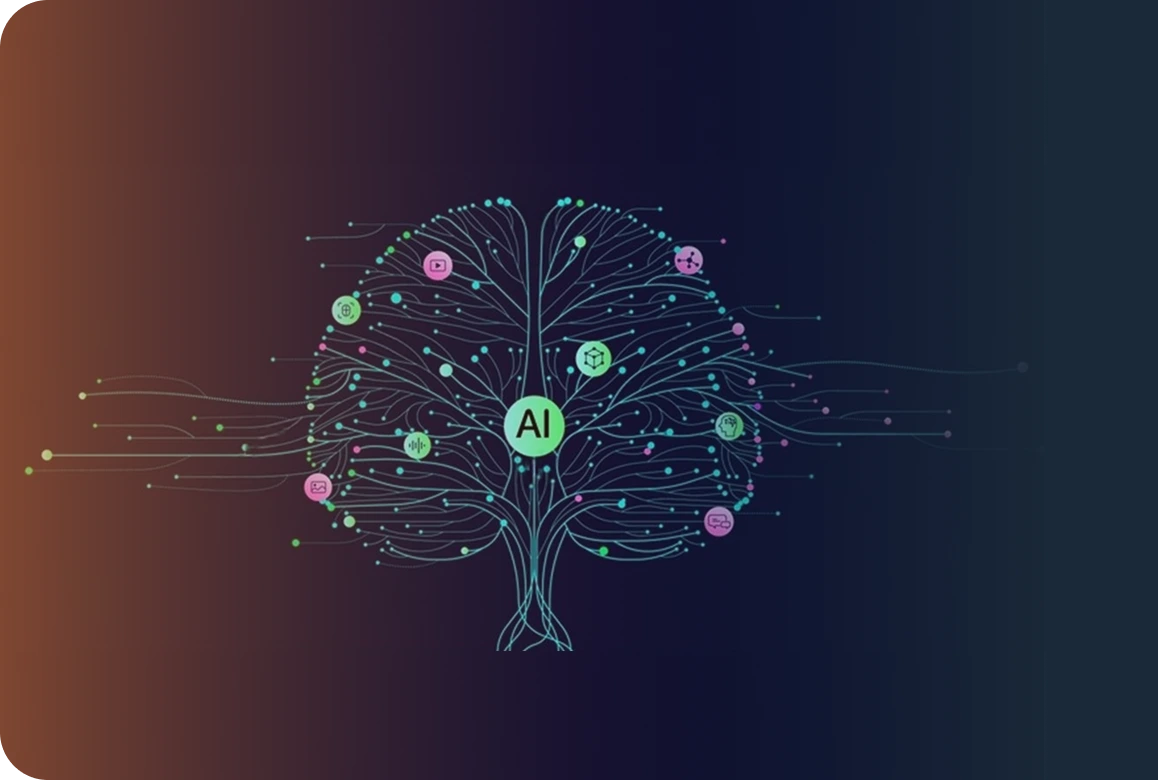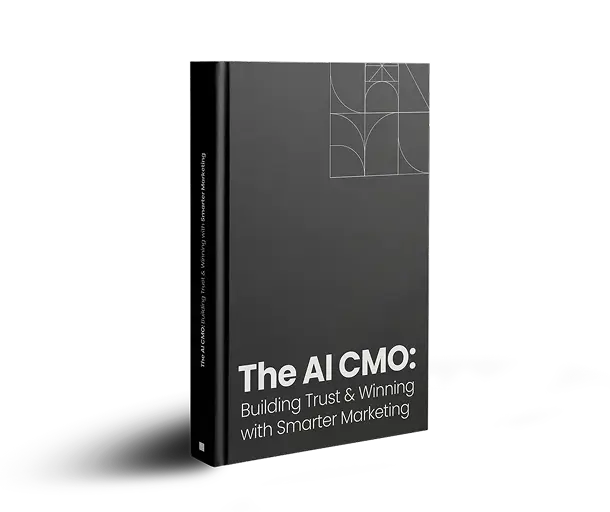
Highlights
- Intelligent personalization in B2B is reshaping how marketers engage decision-makers across the buyer journey.
- Generative AI for marketing enables dynamic content tailored to each account, persona, and buying stage.
- The benefits of AI content personalization include better engagement, improved lead quality, and faster deal closure.
- AI lead scoring prioritizes prospects most likely to convert.
Introduction
B2B buyers have changed how they make decisions. They are no longer receptive to campaigns that cater to a specific audience.
Instead, they expect the same level of personalization they get from Netflix or Amazon, content that feels created just for them. When they don’t find it, they quickly lose interest and move to a competitor.
This is where intelligent personalization in B2B plays a crucial role. It uses AI to understand buyer behavior, predict what they might need next, and deliver the right content at the right time. Every interaction becomes relevant and meaningful. Intelligent personalization is no longer just a marketing idea, it is a proven growth strategy that helps businesses improve engagement, generate better leads, and close deals faster.
What is Intelligent Personalization in B2B?
Intelligent personalization in B2B is the practice of using artificial intelligence, data, and automation to deliver highly relevant, contextual experiences to business buyers.
Unlike traditional personalization that relies on static rules (like industry or job title), AI-powered personalization uses real-time behavioral data, firmographic insights, and predictive analytics to deliver content dynamically.
For example, generative AI for marketing can create a personalized case study for a target account. At the same time, AI algorithms can serve tailored CTAs on your website based on a visitor’s industry or buying stage.
Why Does Intelligent Personalization Matter?
The impact of AI content personalization on B2B marketing is hard to ignore. It goes beyond simply making campaigns look smarter, it directly affects pipeline, revenue, and customer experience.
Better Engagement: When prospects see content that speaks to their exact challenges, they are more likely to open emails, click on CTAs, and respond to outreach. Personalized experiences make buyers feel understood, which builds trust early in the relationship.
Improved Lead Generation: Lead generation using AI helps you focus on accounts that are actually ready to buy. AI tools analyze behavior and intent signals, allowing your team to prioritize warm accounts and avoid wasting time on cold leads.
Faster Pipeline Velocity: Relevant content and offers move prospects through the sales process faster. AI surfaces the right resources, case studies, ROI calculators, or demo invites, exactly when decision-makers are most likely to act.
Lower Customer Acquisition Costs (CAC): When you stop targeting the wrong audience, your marketing spend becomes more efficient. Personalization ensures every ad dollar is directed toward high-intent prospects, reducing cost per acquisition.

Who Benefits from AI-Powered Personalization?
This isn’t just for marketers, it benefits the entire revenue team:
- Marketing teams get better segmentation, insights, and campaign performance.
- Sales teams receive more qualified opportunities thanks to AI lead scoring.
- Revenue operations teams see better alignment across the funnel through AI-driven marketing automation.
- Customers enjoy a smoother, more relevant buying journey.
Where to Apply AI-Powered Personalization
AI can transform the entire buyer journey. Here’s how AI B2B marketing tactics can be applied across multiple touchpoints:
Website: Turn your website into a dynamic experience. Show different hero images, calls to action, and content offers depending on who’s visiting. A returning prospect might see a pricing CTA, while a first-time visitor might be offered a helpful guide.
Account-Based Marketing (ABM): Build hyper-personalized campaigns for key accounts. AI can help you create messaging tailored to each decision-maker and serve the right ads or content at the right time.
Email: Move beyond time-based drip campaigns. Use AI-powered personalization in B2B to trigger nurture sequences based on real behaviors like webinar attendance, pricing page visits, or content downloads.
Content Hubs: Make your resource library smarter. Recommend relevant articles, videos, or case studies based on what a visitor has already read or watched.
Paid Ads: Improve ROI with predictive targeting. Utilize AI-powered lookalike audiences and intent data to target buyers who resemble your top customers and are most likely to convert.
When to Implement Intelligent Personalization
You don’t need a perfect data infrastructure to get started. Intelligent personalization in B2B can be rolled out gradually, at different stages of the funnel:
Top of Funnel: Capture attention with industry-specific offers like guides, reports, or benchmark data to attract the right audience.
Mid-Funnel: Personalize nurture streams based on actions such as webinar attendance, product page views, or whitepaper downloads to keep prospects engaged.
Bottom of Funnel: Deliver high-value assets,including ROI calculators, case studies, and competitor comparisons to help high-intent accounts make informed buying decisions more quickly.
Post-Sale: Maintaining a strong relationship by recommending product training, offering upselling opportunities, and sending renewal reminders using AI insights.
How to Implement an AI-Powered B2B Personalization Strategy
Building an effective AI-powered personalization in a B2B strategy doesn’t have to feel overwhelming. Here’s a step-by-step framework to get started:
1. Audit Your Data
Start by reviewing your CRM and marketing automation data. Clean, accurate data is the foundation of any successful personalization strategy. Remove duplicates, fill in missing fields, and make sure you’re tracking the right buyer signals, such as page visits, form fills, and email engagement.
2. Choose the Right Tools
Select platforms that fit your goals. Look for tools that combine AI-powered lead generation, predictive analytics, and content personalization capabilities. Many modern marketing platforms offer AI add-ons, so that you can integrate personalization into your existing marketing stack.
3. Set Up AI Lead Scoring
Use AI lead scoring to automatically rank prospects based on firmographics, intent data, and engagement. This ensures your sales team focuses on high-potential accounts while marketing continues to nurture colder leads.
4. Deploy AI-Driven Marketing Automation
Build dynamic workflows that adapt in real time. For example, if a prospect visits your pricing page, they can automatically receive a follow-up email with a case study or ROI calculator. AI-driven marketing automation ensures no opportunity slips through the cracks.
5. Test, Measure, and Optimize
Personalization is not a “set it and forget it” tactic. Continuously track engagement, conversion rates, and pipeline impact.Utilize AI insights to identify which messages perform best, and then refine your campaigns for even more effective results.
Real-World Examples of AI-Driven Personalization in B2B
Example 1: AI Chatbots & Lead Qualification
Company: Wrike (a project management SaaS)
What they did: Deployed an AI-powered chatbot to engage website visitors 24/7, qualify leads automatically, and guide them through demo or booking flows.
Results: They saw a 496% increase in pipeline generation and a 454% growth in bookings coming from chatbot-assisted prospects.
Example 2: Predictive Analytics to Identify High-Intent Accounts
Company: Large Manufacturer via Pattrn Data case study
What they did: Used predictive analytics on historical data, customer behavior, and market trends. They built opportunity scoring and personalized recommendations.
Results: Conversion rate increased by 28%, average deal size by 15%, and they identified $15 million worth of previously overlooked opportunities.
Example 3: ABM Campaign with Industry-Based Personalization
Company: Snowflake via the ABM platform Terminus
What they did: Launched a hyper-personalized ABM campaign targeted at enterprise-level accounts, tailoring content to each account’s industry and specific pain points. Messaging was refined with data insights.
Results: They achieved a 300% increase in engagement rates and around a 50% decrease in sales cycle length during that campaign.

FAQs
1. How Does AI Improve Lead Generation in B2B Sales?
AI predicts buying intent, scores leads, and helps focus resources on accounts most likely to convert, improving both efficiency and win rates.
2. How Can AI Be Used For Content Marketing in B2B?
Generative AI creates dynamic content, from personalized emails to tailored case studies, at scale.
3. What is AI Lead Scoring and Why Does it Matter in B2B Sales?
AI lead scoring uses data to prioritize leads by conversion likelihood, helping sales teams spend time on the highest-value prospects.
4. How Does AI-Driven Marketing Automation Support B2B Growth?
It enables real-time personalization, automated nurture journeys, and faster hand-offs between marketing and sales, ultimately driving more revenue.
Conclusion
Intelligent personalization is the backbone of modern demand generation. By combining AI-powered lead generation, AI lead scoring, and AI-driven marketing automation, you can create a connected buyer journey that turns leads into customers faster.
Our advice? Start small, experiment with one personalization initiative, measure its impact, and scale what works. The future of B2B growth belongs to those who can deliver the right content to the right person at the right time, every time.
Our blog
Latest blog posts
Tool and strategies modern teams need to help their companies grow.

B2B Leaders Redefine Demand Generation: Blending Data, Trust & Human Connection. Disc...

Learn how AI-Enhanced Tele-Verification and Account-Based Experience (ABX) together h...

Learn how to improve lead quality and boost conversion rates in B2B with AI enrichmen...





